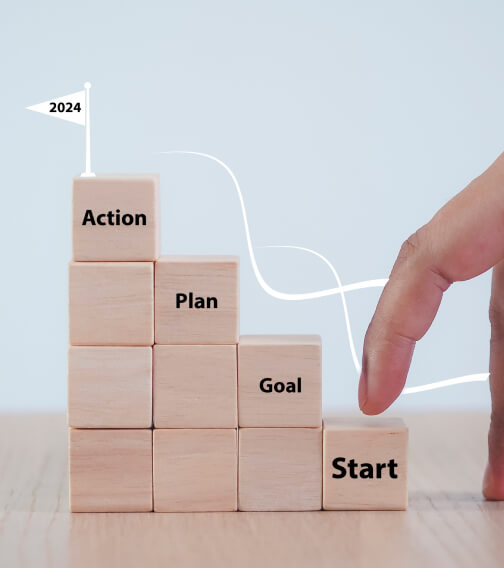
Performance management is a key operation within human resources that optimises employee performance to achieve organisational goals. Performance management is a never-ending cycle of setting goals and expectations, monitoring progress, providing feedback, and supporting employee development.
By enhancing individual and team performance, HR professionals can drive workforce productivity, foster business growth, and ensure alignment with the company’s overarching long-term goals.

Successful performance management is multi-layered, with the foundation being goal setting. An employee’s deliverables should be Specific, Measurable, Achievable, Relevant, and Time-bound (SMART). SMART goals provide employees with the clarity they need to work effectively and meet expectations.
In alliance with setting goals, evaluating performance through data-based Key Performance Indicators (KPIs) is of equal importance (be sure your employees know what their KPIs are). HR should also consider adopting platforms and tools that streamline performance management through providing real-time data and actionable insights.
Investing in employee development and training programs is another vital component of performance management. Creating customised development plans based on an employee’s strengths and areas of improvement enhances workforce capabilities and boosts overall team performance. Don’t forget, recognition and rewards play a key role in motivating employees to upskill!
In cases where an employee’s performance falls below expectations, structured Performance Improvement Plans (PIPs) should be implemented to provide a clear roadmap to meeting expectations.
Set Clear Goal Setting and Alignment:
Start by setting clear, specific, and measurable individual goals that align with the business’ overarching goals. This clarity enables employees to understand expectations and focus their efforts on achieving meaningful outcomes.
Provide Regular and Constructive Feedback:
Hold regular feedback sessions to provide timely and constructive guidance. Feedback should be specific, actionable, and focused on both strengths and areas for improvement. Also create transparent, two-way feedback channels, perhaps offering anonymity.
Introduce Employee Training Opportunities:
Invest in learning and development opportunities for employees. Tailor educational plans to individual needs, promote up-skilling, and support career growth to foster a culture of lifelong learning and improve retention.
Ensure Transparent and Fair Evaluation:
Ensure performance evaluations are transparent, fair, and based on an objective criteria. Use understandable performance metrics and Key Performance Indicators (KPIs) to assess progress and provide a comprehensive overview of performance.
Recognise and Reward:
Recognise and reward employees for their contributions and achievements. Rewards, such as bonuses, gift cards and promotions, as well as public recognition can motivate high performance and reinforce ideal cultural behaviours.
Communicate and Collaborate:
Foster open communication and collaboration amongst teams. Encourage brainstorming sessions and feedback to drive innovation, creativity, and collective success.
Utilise Technology for Accurate Analytics:
Leverage modern technology and analytical tools to streamline processes. Use data to make informed performance decisions, track individual and team progress, as well as identify areas for improvement.
Implement Performance Improvement Plans (PIPs):
When an employee’s performance falls below expectations, implement Performance Improvement Plans (PIPs). Collaborate with employees to understand the rationale behind their performance, set clear and achievable goals, provide necessary support, and monitor progress. Be sure to provide recognition and rewards when PIPs are met!
Effective performance management practices offer a range of benefits that contribute to organisational success and employee satisfaction. It provides clarity and alignment – ensuring that employees understand their contribution to overall business output. This fosters a sense of purpose and direction, motivating employees to perform at their best.
Performance management also encourages continuous improvement by giving employees the opportunity to enhance their skills and reach their full potential. This improves individual performance as well as strengthens the organisation’s capabilities and competitiveness.
In turn, performance management increases employee engagement and strengthens retention rates due to employees feeling valued and a sense of accomplishment. By recognising and rewarding outstanding performance, organisations can boost morale, increase job satisfaction, and retain top talent.
Additionally, performance management tools contribute to data-driven decision-making and strategic planning. This approach enables organisations to identify growth opportunities and allocate resources accurately.
By implementing best practices, organisations can create a high-performing workforce, accelerate business success, and maintain a competitive edge.


Another challenge is the lack of employee buy-in, leading to resistance towards performance management initiatives. To overcome this challenge, organisations should involve employees in goal-setting and communicate the purpose and benefits of performance management transparently. Engaging employees in the process and emphasising the connection between individual performance and organisational output can increase buy-in.
Traditional performance management strategies can be challenging in remote or hybrid work environments due to communication and collaboration barriers. Leveraging virtual performance reviews, introducing channels such as Slack and Teams or scheduling recurring online check-ins between managers and remote employees can improve sense of belonging and performance management effectiveness.
